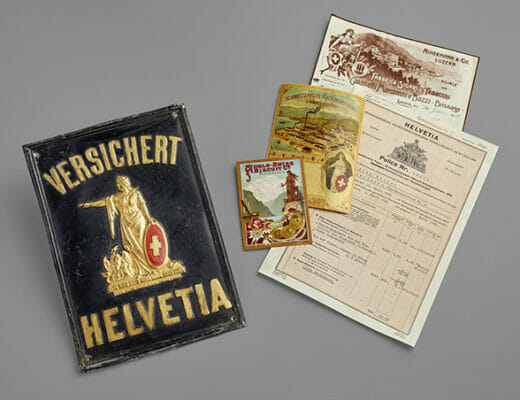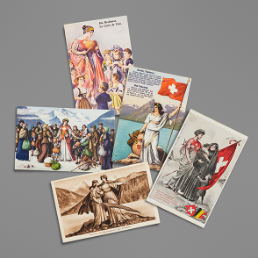Who is Helvetia: The Iconic Personification of Switzerland
Helvetia has been an enduring symbol of Switzerland for centuries. From postage stamps and writing paper to buildings, hotels, and restaurants, her image has been used in countless ways. But who is Helvetia exactly, and why has she become such an important figure in Swiss culture?
According to the Historical Dictionary of Switzerland, it is the female personification of Switzerland. There are two distinct versions: one that represents Switzerland as a geographic area and another that represents the birth of the Swiss nation.

The history of Helvetia: from geographic symbol to political figurehead
The first iconographic depiction dates back to 1642, with the image on the title page of Matthäus Merian’s “Topographia Helvetiae”. She bears symbols of agriculture, representing abundance and the Swiss landscape. Initially, Helvetia shared her role with male figures, but in the 18th century, female figures became more prevalent, featuring alongside other female figures from antiquity.
Helvetia’s increasing political significance in the 19th century
As Swiss national identity grew in the 19th century, it became politicized, featuring weapons such as a spear or sword and a shield. With the founding of the Swiss federal state in 1848, it became the face of the new Switzerland. The state took on new sovereign tasks previously handled by individual cantons, and it became the symbol of a unified Swiss nation. The first coin embossed with her image was issued in 1850, and she first appeared on a postage stamp in 1854. The official Latin name for the Swiss Confederation – Confœderatio Helvetica (CH) – was also a testament to her rising profile in the national consciousness.
Throughout the second half of the 19th century, representations of Helvetia experienced a boom. She was depicted on postcards as a protector of various Swiss towns and appeared frequently as a patron for anniversaries, on letterheads and logos, and in club and institution names. Companies also adopted her name, including sewing machines, cigars, and fire insurance. Boats were even named after her, and there were music societies and choirs bearing her name.
Helvetia during World War I: a symbol of hope and comfort
During World War I, Helvetia served as a source of comfort and hope. Many postcards were printed and distributed to bolster morale, portraying it as a soldier’s mother, a carer of refugees and internees, and a nurse. After the war, its motifs gradually disappeared from everyday imagery.
However, the symbolic resonance of it experienced a revival in the collective consciousness during times of political and social upheaval. In the aftermath of World War II, as Switzerland navigated a complex geopolitical landscape, itonce again emerged as a unifying emblem. The nation’s commitment to neutrality and humanitarian efforts resonated with the image of it as a guardian of peace and compassion.
In the latter half of the 20th century and into the 21st century, Helvetia’s presence found new expression in art, literature, and public discourse, symbolizing Switzerland’s enduring commitment to diplomacy and humanitarian values. The multifaceted role of it continues to evolve, reflecting the nation’s ongoing engagement with global challenges and its dedication to fostering a sense of unity and shared purpose.

Helvetia today: a lasting legacy on coins and postage stamps
Today, Helvetia’s image can still be found on the 50-cent and 1- and 2-Swiss franc coins, with an image that has remained unchanged since 1874. The word “Helvetia” is also featured on postage stamps. However, her image is not commonly seen in modern imagery. Nevertheless, a special postage stamp featuring it will be issued to mark the 175th anniversary of the Swiss federal state in 2023.
In conclusion, Helvetia is a significant figure in Swiss culture, symbolizing the country’s landscape, history, and unity. Her image has been used in countless ways over the centuries, and while it may not be as prominent today as it once was, she remains an important part of Switzerland’s identity.




 Littauerboden 1 CH-6014, Luzern Switzerland
Littauerboden 1 CH-6014, Luzern Switzerland info@swissmade.direct
info@swissmade.direct

